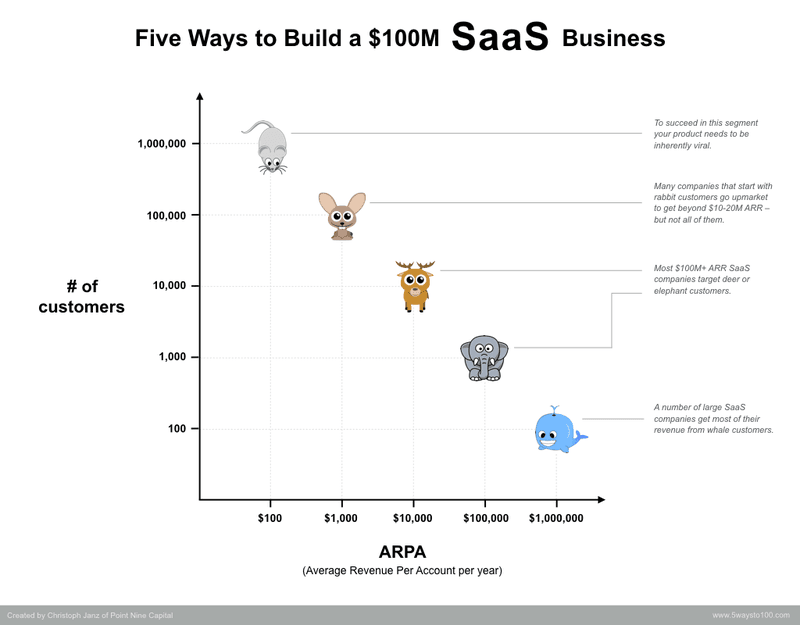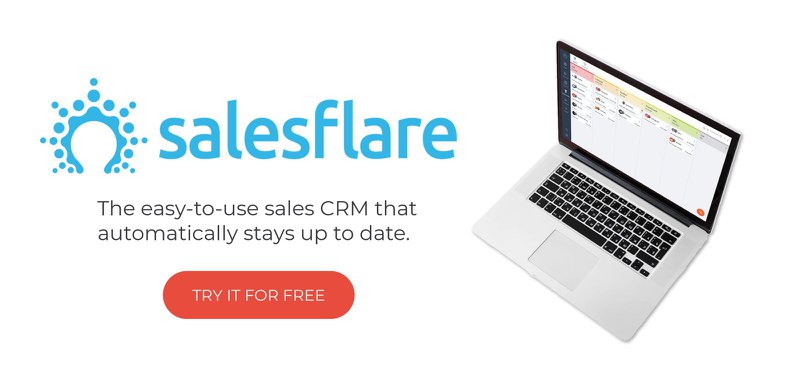SaaS Sales: The Fundamentals
All you need to know to kill it in SaaS sales
Want to learn all the fundamentals of SaaS sales in one go, without endlessly Googling around? 🎓
Then you’re in the right place!
We’ll cover the following points below (you can click to a specific one too): 👇
- How do we define SaaS sales exactly?
- What are the different models out there? (and their sales cycles and funnels)
- How to be successful at it: a strategy playbook
- A rundown of the most important metrics in SaaS sales
- Overview of common compensation, salary, commission & quota
- Where you can go for further training on the topic
If you have questions after that, feel free to ping us. We’re in SaaS sales every day, selling SaaS ourselves and helping customers with it too (we have software for it 😃).
What is the meaning or definition of SaaS sales?
Before we get started, let’s get the absolute fundamentals down first. What is SaaS sales exactly?
SaaS sales is the practice of selling Software as a Service (SaaS) to customers. As SaaS mostly refers to web-based software sold on a subscription basis, it is mostly focused on getting new subscribers and on retaining and upselling current subscribers.
So what’s most distinctive about it is that you’re selling software and you’re selling subscriptions.
The fact that you’re selling software means that it can get a little technical at times, although that very much depends on the software’s complexity and ease of use.
The fact that you’re selling subscriptions means that you’re inherently in it for the longer term with your customers. Customers who subscribe and then quickly churn (no, we’re not talking about making butter but about canceling; we’ll get into some of the slang later) are not what you’re looking for.
3-5 different SaaS sales models
Now, is all SaaS sales the same? Definitely not.
Note: we’ll only focus on B2B sales here, as in B2C SaaS sales there’s hardly ever a sales team involved.
There’s huge differences between the different SaaS sales models:
- Self-service sales: the customers buy the software largely without any help
- Transactional sales: the customers get help from the sales team, but buy quickly and don’t require a whole lot of different sales interactions
- Enterprise sales: the buying process is a rather lengthy one and requires multiple interactions with the different stakeholders within the enterprise
And it ultimately comes down to the size of the “animal” you’re selling to.
Christoph Janz of Point Nine Capital, a venture capital firm specializing in SaaS, distinguishes 5 different animals with increasing sizes: mice, rabbits, deer, elephants and whales.

The type of company largely defines your sales and business strategy in SaaS.
If you sell to mice 🐭, you can’t really employ a sales team. That would be too expensive. The whole sales process needs to be self-service. And the product needs to have some sort of virality built-in, because you can’t even spend much on attracting customers.
If you sell to rabbits 🐰, there still isn’t a lot of budget to do sales. Most of the process still needs to be self-service, although you could make a little effort to close a deal, but it can’t go beyond transactional sales. Essentially, sales should be closed in one call. Leads need to come inbound, through content marketing or ads.
If you‘re hunting deer 🦌, you’re in transactional sales territory. An inside sales force can close deals, and also help generate them to a certain extent. You however do need a large amount of leads, so marketing will play a very important role in lead generation.
If you’re hunting elephants 🐘, that’s when you’re selling expensive subscriptions to large enterprises. You’re doing enterprise sales. With the margins you’re generating per customer, there’s no problem to go visit them, so you can do slightly more classic field sales.
Finally, if you’re after whales 🐳 (probably not exclusively), you better get strategic about your enterprise sales approach.
Average SaaS sales cycle lengths
Based on the classification of SaaS sales customers into different animals, you can probably tell already that some average sales cycle lengths are going to be longer than others. ⏱️
The best data we’ve found on this topic is from Matt Bertuzzi of The Bridge Group on Quora:
- Rabbits (ACV < $5k): 1.3 months (40 days)
- Small deer (ACV $5-10k): 2 months (62 days)
- Large deer (ACV $10-$50k): 2.8 months (84 days)
- Small elephants (ACV $50-$100k): 3.8 months (117 days)
- Large elephants & whales (ACV >$100k): 5.5 months (169 days)
These numbers are based on research Matt did with 305 companies, but they are of course just indications. At Salesflare, we mostly sell to rabbits and small deer, and our average sales cycle length is just 22 days.
The easier you can make it for your customers to get started and buy, the shorter you can make the sales cycle.
If you’re offering a trial (most common when selling to mice, rabbits or deer), you can also experiment with making the trial’s length shorter, or even with making it variable.
At Salesflare, we’re now offering a trial that starts with 7 days and awards you more days (up to 30 days, and even longer for larger teams) as you set up the software.
Before we introduced this trial with variable length, we offered a 14-day free trial with the possibility to extend for 7 days after it expired. Our average sales cycle was 3 days shorter at around 19 days (but our conversion rates would be lower).
Around 30-40% of people who now subscribe to Salesflare do this around the time the trial expires (max 1 day before or after). Another 40% subscribes more than a day before the trial ends. 20-30% needs a bit more time to get things together after the trial ends.
Typical SaaS sales funnel or process
Your sales funnel and sales process might also look very different depending on the size of the contracts you’re selling.
When it comes to smaller deals (mostly mice and rabbits) the AAARRR pirate funnel 🏴☠️ tends to be quite popular:
- Awareness: people visit your website
- Acquisition: they sign up for a trial
- Activation: they start using the software
- Retention: they keep using the software
- Revenue: they pay you to use the software
- Referral: they refer other people to your software
At Salesflare, we’ve expanded on this marketing-sales funnel framework a bit to reflect our focus on content marketing and on long-term retention, turning AAARRR into AAAAARRRRR:
- Attraction: people visit your blog
- Audience: people repeatedly visit your blog
- Awareness: people visit your website
- Acquisition: they sign up for a trial
- Activation: they start using your software
- Retention trials: they keep using the software during the trial
- Revenue growth: they start paying you to use the software
- Retention subscriptions: they keep using the software during the subscription
- Referral: they refer other people to your software
- Revenue: they pay you to use the software
When selling to larger animals (like deer and elephants), people usually break down the sales funnel as follows:
- Marketing qualified lead (MQL): marketing gets a lead that left behind contact information and seems like a right fit
- Sales qualified lead (SQL): sales talks to the lead and qualifies it as one it call sell to
- Sales opportunity (can have substages like demo scheduled, demo given, proposal made, etc.): sales guides the lead through the buying process
- Closed deal: sales closes the deal
Another strategy (mostly for rabbits and deer) has been to rely more on data and product usage to qualify leads. We then often talk about product qualified leads (PQLs).
Finally, whichever model you’re in, from a higher level perspective your team has three main responsibilities in the longer run 👇:
- Onboard: get people properly set up and trained on how to use the software
- Retain: make sure people keep getting value from the software and stay subscribed
- Expand: upsell and cross-sell people to more and more expensive licenses
Now, let’s explore the SaaS sales playbook in more detail.

A strategy playbook: how to kill it in SaaS sales
1. Target, qualify, optimize target
The best way to sell more with the same size of sales team (or to maximize the return on investment on your sales efforts) is to minimize the amount of time spent on the wrong leads.
It’s extremely important to be very clear about who’s the right target for your SaaS, in its narrowest sense. 🎯 To “find your niche”, as people tend to call it.
These days more than ever, and especially in SaaS sales, you can find an enormous amount of information about the leads you’re targeting without even talking to them. Compiling a hyper-targeted lead list should be your first filter when you’re trying to predict the answer to the question “will they buy?”.
After that, when you are in touch with them, keep filtering. Try to qualify the lead as soon and as well as possible. This again means predicting their likelihood to buy; this time by asking the right questions.
If a lead isn’t qualified now but might be in the future, hand them over to the marketing team for nurturing and/or simply schedule a reminder to follow up. Some of the best deals don’t happen immediately but need some time to convert.
While doing all this over and over, you’ll inevitably learn more about targeting and qualification. Use this to improve your process and keep iterating on it.
And if you want to get some more inspiration, click to one of the linked articles from our Sales Pipeline Masterclass.
2. Align marketing and sales 100%
While many traditional companies can still afford running their marketing and sales teams in different silos, SaaS companies can not. Especially not in companies selling to rabbits and deer (if you’re confused by the weird animal references, go back and read the previous section on SaaS sales models 😆).
In these companies, marketing teams are usually:
- Generating new leads for the sales team
- Nurturing early-stage or temporarily disqualified leads
- Creating materials to help onboarding, stimulate upsales and lower churn
All of this relates very closely to what the sales team is doing, so good/great collaboration between marketing and sales is extremely important.
The two most common mistakes in this respect are:
- Running the marketing and sales team under separate leadership
- Using a CRM that sales people don’t fill out for 100%
The first issue is rather easy to fix: run the sales and marketing teams as one team, as one revenue or growth team. Appoint a VP of Sales & Marketing or a CRO.
The second issue is a harder one. If your sales team doesn’t update the CRM diligently, entering every single customer detail and interaction in there, the collaboration is bound to fail. Leads might not be handed over from the one to the other team correctly (with leads ending up abandoned), or they might be targeted by both teams at the same time (imagine your best lead being targeted with a big promo by the marketing team, costing you a lot of revenue/commission).
That’s why it’s crucial to get a CRM that makes sales people want to use the CRM. One that is easy to use, built from the ground up for automated data input rather than manual data input, and actively helps your sales team with following up their leads. You know, like Salesflare. 😏
3. Focus on onboarding
A great onboarding is key for two reasons:
- It maximizes your conversion rate from trial to paid, as more people are likely to seriously start using your software
- It minimizes your churn, as people who are onboarded better are likely to get more value from your software
To the second point, we’ve seen in our own data that the quality of the onboarding during the trial (so during the first few weeks on the software) has a significant effect on the churn in the long term, with some of the steps in the onboarding process lowering the churn by about 40-50%. 😮
There’s of course only so much you can do here as a sales team (especially when selling to mice or rabbits) so make sure you work closely with the product team to keep improving the product onboarding as a #1 priority.
Some of the things you can consider doing that don’t really need the product team are:
- Giving trainings to the team on how to use the product
- Helping with integrations and data imports
- Building a close relationship with your leads, focused on helping them with every single roadblock and question along the way
I personally believe that onboarding is where the best SaaS companies differentiate themselves from the others.
4. When on board, identify possibilities for upsales
Want to increase the amount of money you make on each client as a SaaS company? Then upsales is where it happens.
Some of the most successful SaaS companies are the ones who are most active in this area. They’ll keep identifying new opportunities to offer more value to their customers. And then charge them more when they do.
It is one of the easiest ways to increase your revenue in the short term, but it is also one of the most dangerous ways to hurt the relationship with your customers in the longer term. 🤑
Some SaaS companies lure in customers with promises of huge discounts, lock them into contracts and software set-ups, and then start charging them more with aggressive price increases that don’t correspond to the extra amount of value added to the customer. If you care about more than short-term gains alone, it’s best to steer clear from this way of dealing with people.
As long as you keep yourself and your sales team focused on the long term, offering more value to customers and charging a reasonable amount for it in return is one of the best ways to be successful at SaaS sales.
5. Prevent churn before it happens
What’s the single most impactful thing a SaaS company can do to increase its sales growth? That’s right: preventing churn. 😄
And actually, the 4 strategies we’ve covered so far will contribute to reducing that churn. Because what’s better to keep subscribers happy than:
- Only signing up the right ones
- Serving them as one team
- Onboarding them as well as possible
- Always staying focused on offering them more value
But that’s not all you can do. You can also:
- Keep track of bugs and potential improvements, fix them, and communicate that back
- Build a trusting relationship with your customers, so they know they can always rely on you
- Check in now and then to identify whether any help is needed
- Monitor their usage and get in touch when it drops
Tracking the right data, keeping it organized and acting upon it is key here, which neatly brings us to the sixth and last strategy in the playbook. 👇
6. Use data and technology to its fullest potential
The biggest opportunity SaaS companies have when compared to traditional companies is the abundance of data and the ease to introduce technology to track it and keep it organized.
So seize that opportunity! And use the software of other SaaS companies to superpower your sales.
Here’s some interesting products that can make a huge difference to your SaaS sales:
- Salesflare – of course – can help you with perfectly keeping track of your customers without inputting any data. It tracks recurring revenue like no other CRM, can send automated email sequences/flows, and has the closest possible integration with your G Suite or Office 365 inbox and calendar. We’re biased, but we also know our target audience. And that audience contains a lot of SaaS companies. 😄
- Intercom is the best built live chat and support system around. You can also use it to send onboarding emails, show product tours, and much more. (They have a lot of upsales going on. 😉)
- Segment can help you track and organize your data across apps with a minimal amount of work. Track things once, use the data everywhere.
- Acute is our tool of choice when tracking customer feedback. It links up feedback with people, essentially visualizing the connection between Intercom and Github for us.
- RingBlaze is one of the best business phone systems. It offers multiple features like call recording, group calling, auto attendant, etc. It also offers a direct call widget which you can integrate on your website. This widget can let customers connect with you directly in just a click.
- Last but not least, Zapier is what you need to integrate things across tools.
There’s obviously many more products around, but those are some of the key ones we use ourselves to stay maximally organized in sales.

The most important SaaS sales metrics
There’s a lot of SaaS metrics around, so let’s focus on the most important ones you’ll need to understand to know how your business is doing. 📈
MRR / ARR: Your monthly or annual recurring revenue represents the amount of money you make on a monthly or annual basis from your subscriptions.
MRR growth rate (gross vs. net): The gross MRR growth rate is a percentage that represents the amount of new MRR you generate in a certain month, divided by the MRR you had in the previous month. To calculate the net MRR growth rate, you need to add in the MRR growth from existing customers as well (usually negative, hence the “net”), i.e. reactivations + expansion – contraction – churn, and again divide this by the MRR from the previous month.
Churn (gross vs. net, customer vs. revenue): The amount of customers or revenue you lose in a certain period. The gross revenue churn represents the revenue loss from customers who cancel their subscription. The net revenue churn is the gross revenue churn compensated by the effects of expansion and reactivation. To get the percentage amount, divide by the MRR at the end of the previous period.
ARPU or ARPA: The average monthly revenue per user or account. The easiest way to calculate it is dividing your MRR by the number of paying customers you have.
CAC: The customer acquisition cost is the all-inclusive cost you make to acquire a customer.
LTV: The average amount of money you make on a customer during the lifetime of a subscription.
CAC/LTV ratio: The percentual amount of your LTV that you need to spend to acquire a customer. It’s a measure for the return on investment of your sales efforts.
CAC payback period: The amount of months of revenue you need to recoup your CAC, aka. how fast you can break even on your sales investment. To calculate this the quick and dirty way, divide your LTV by your ARPA and multiply it by your percentual gross margin.
Compensation: common salary, commission and quota
Selling SaaS can be quite a lucrative job. 💵
According to Bridge Group, for SaaS account executives (AEs) in the US in 2020:
- The average year salary is $158K (when hitting the quota), with a 50:50 split between base earnings and variable earnings. This ranges from $95K when selling to rabbits to $215K when selling to large elephants and whales.
- The average quota is $775K in annual contract value (ACV). This ranges from $350K when selling to rabbits to $1200K when selling to large elephants and whales.
- At 100% of quota, the median commission rate on new business is 10% of ACV. Renewals are usually paid at a lower rate (in 55% of cases), while expansion is usually paid at the same rate (in 85% of cases).
- About 65% of sales reps achieve their quota.
Of course many of the jobs are still located in California where living costs are very high, so take this with a grain of salt.
And for the European reader who is not familiar with US salaries: healthcare and education are (almost) not subsidized by the government in the US.
How to keep learning and excel at SaaS sales
There you have it: the fundamentals! But there’s so much more to learn. 🎓
Here’s a few things I can recommend you check out if you’re ready to go deeper:
- Listen to some good sales podcasts or to interviews with SaaS founders
- Read the top sales books
- Treat yourself or your team to some sales training
- Check out our sales pipeline masterclass
- Or dig in deeper and read about building a solid sales pipeline, setting sales quota correctly, selling remotely, sending personalized emails at scale, …
Also, feel free to reach out to me and the team if I / we can help.
Good luck and go kill it! 👊

We hope you liked this post. If you did, spread the word!
👉 You can follow @salesflare on Twitter, Facebook and LinkedIn.
- 8 Benefits of CRM + 6 Challenges to Overcome First - April 18, 2024
- 8 Best Sales Management Software + Feature Comparison [2024] - March 28, 2024
- 20+ Best B2B Lead Generation Companies & Services [by Category] - March 21, 2024
